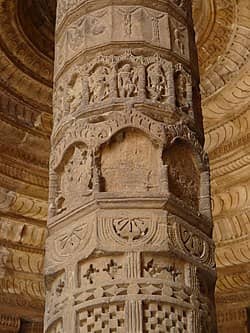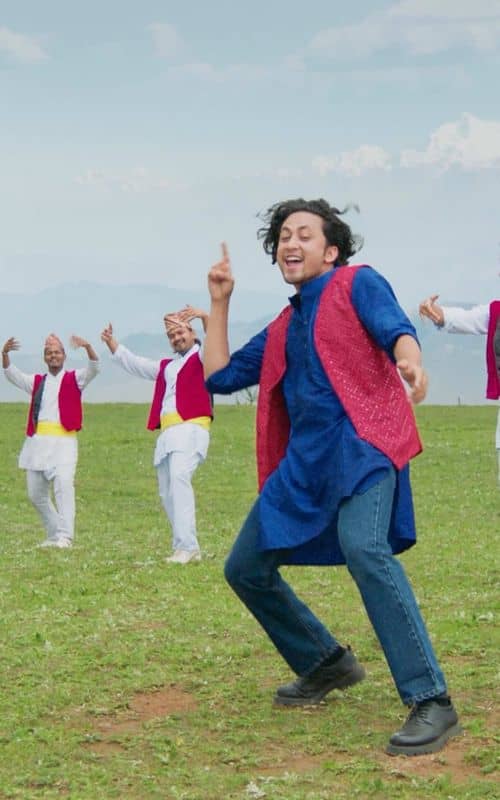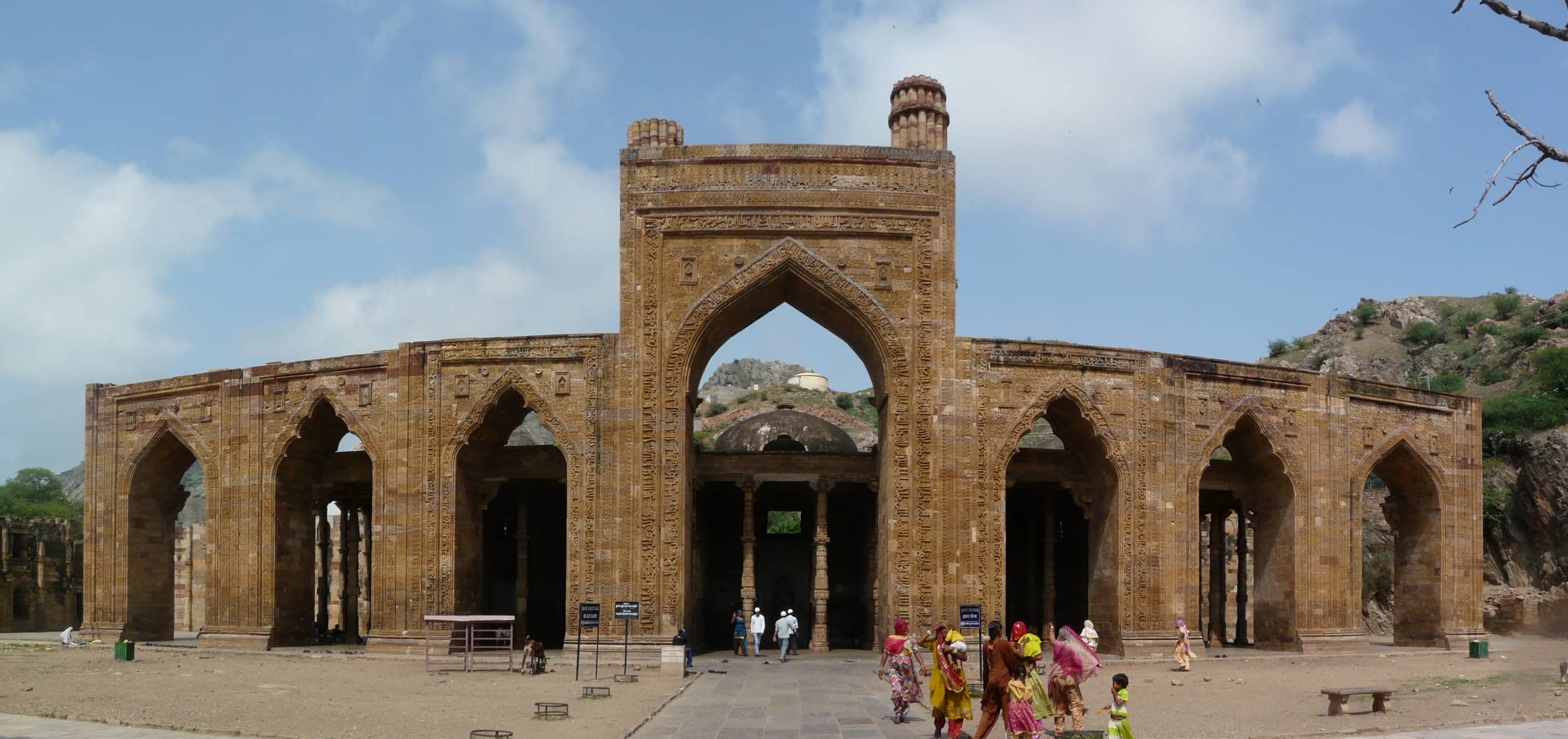
Adhai Din Ka Jhonpra Ajmer
A historical mosque in Ajmer, showcasing early Indo-Islamic architecture with hundreds of intricately carved pillars.

Highlights
Must-see attractions

Social
From TikTok & Reddit
Best Time
Beat the heat and crowds

Adhai Din Ka Jhonpra Ajmer
Best Time
Beat the heat and crowds

Highlights
Must-see attractions
A historical mosque in Ajmer, showcasing early Indo-Islamic architecture with hundreds of intricately carved pillars.
"An unforgettable stop in Ajmer offering a powerful lesson in history with intricate carvings and monumental arches."

🚶♂️ Walk from Dargah
It's a short, pleasant walk from Ajmer Sharif Dargah, lined with food stalls and shops. :food:
💰 Free Entry!
Enjoy this historical marvel without any entry fee. A budget-friendly experience. :moneywithwings:

Highlights
Discover the most iconic attractions and experiences

Intricate Pillars
Interior Hall
Marvel at the hundreds of ornately carved Hindu and Jain pillars supporting the structure, a testament to its original purpose.

Grand Arch Screen
Facade
Admire the majestic screen wall featuring seven arches adorned with detailed Islamic calligraphy.

Architectural Fusion
Entire Structure
Witness the unique blend of Hindu, Jain, and Islamic architectural styles, showcasing a rich historical narrative.
Plans like a pro.
Thinks like you
Planning Your Visit
Respectful Visit Required
Uncover Layers of History
Best Times
Insider Tips
from TikTok, Instagram & Reddit
🚶♂️ Walk from Dargah
It's a short, pleasant walk from Ajmer Sharif Dargah, lined with food stalls and shops. :food:
💰 Free Entry!
Enjoy this historical marvel without any entry fee. A budget-friendly experience. :moneywithwings:
🤫 Respectful Silence
This is a place of worship and history; maintain quiet and respect the atmosphere. :pray:
📜 Learn the History
Understand its past as a Sanskrit college before visiting for a richer experience. :books:
Tips
from all over the internet
🚶♂️ Walk from Dargah
It's a short, pleasant walk from Ajmer Sharif Dargah, lined with food stalls and shops. :food:
💰 Free Entry!
Enjoy this historical marvel without any entry fee. A budget-friendly experience. :moneywithwings:
🤫 Respectful Silence
This is a place of worship and history; maintain quiet and respect the atmosphere. :pray:
📜 Learn the History
Understand its past as a Sanskrit college before visiting for a richer experience. :books:
What Travellers Say
Reviews Summary
Visitors praise Adhai Din Ka Jhonpra for its impressive Indo-Islamic architecture, particularly the intricately carved pillars and grand arches. Many appreciate the historical significance and the peaceful atmosphere, especially when visiting in the morning. However, some find it less engaging for a typical tourist visit, describing it as quiet with not much to 'do' beyond observation.
"The Adhai Din Ka Jhonpra is an unforgettable stop in Ajmer that offers a powerful and visible lesson in Indian history, blending intricate stone carvings with monumental arches. It is absolutely a good place to visit and a high-rated architectural marvel.It was originally a Sanskrit College (Pathshala) and a Saraswati Temple commissioned by the Chauhan king Vigraharaja IV in the 12th century.It was later converted into a mosque by Qutb-ud-Din Aibak in the late 12th century, with subsequent beautification by Iltutmish.The courtyard and interior hall are supported by numerous ornately carved Hindu and Jain pillars.The façade features a grand screen wall of seven majestic arches with intricate Islamic calligraphy."
Bibhuti Bhushan Biswas
"i visited this place which is about 1 km from the dargah. it’s more of a pilgrimage spot than a usual tourist place, so respect and silence are expected. the architecture is impressive and the environment is peaceful, but personally, i didn’t find it very engaging or interesting for a visit. it felt a bit quiet and not much to do here. if you’re looking for a calm spot to reflect, it might be okay, but for a fun or exciting visit, it might not be the best choice."
Shubham Dangi
"Architectural design structural design carvings on stone, really impressive Masjid. Cool and ambient place surrounded with lush green mountains"
Syed Nawazur Rahman
What People Like
What People Dislike
Frequently Asked Questions
🚇 🗺️ Getting There
Adhai Din Ka Jhonpra is conveniently located about 1 km from the Ajmer Sharif Dargah. You can easily walk there, enjoying the street food and shops along the way. Taxis and auto-rickshaws are also readily available if you prefer not to walk.
Yes, it's quite accessible. Auto-rickshaws and local buses frequently ply the route near the Dargah, making it easy to reach Adhai Din Ka Jhonpra from various parts of Ajmer city.
If you're arriving in Ajmer by train or bus, you can hire a taxi or an auto-rickshaw directly to Adhai Din Ka Jhonpra. It's a well-known landmark, so drivers will know the way.
While there isn't a dedicated large parking lot, you can usually find space for auto-rickshaws and some cars on the nearby streets. Be prepared for potentially limited parking during peak hours.
The path leading to Adhai Din Ka Jhonpra from the Dargah is generally safe and bustling with activity, lined with shops and food stalls. It's a pleasant walk during daylight hours.
🎫 🎫 Tickets & Entry
No, there is no entry fee to visit Adhai Din Ka Jhonpra. It's a free historical site, making it an accessible attraction for all visitors.
Adhai Din Ka Jhonpra is generally open from sunrise to sunset. It's advisable to visit during daylight hours to fully appreciate the architecture and carvings.
Since there is no entry fee, online booking is not required or available for Adhai Din Ka Jhonpra. You can visit anytime during its open hours.
As it is a historical mosque, it's recommended to dress modestly, covering your shoulders and knees out of respect for the site.
Yes, you can get a good sense of its historical significance and architectural beauty in about 30-60 minutes, though you could spend longer if you're an architecture enthusiast.
🎫 🏛️ Onsite Experience
The name translates to 'Shed of two and a half days.' Legend has it that the mosque was constructed in this short period, though historical accounts suggest a longer construction timeline.
You'll find a fascinating blend of Indo-Islamic architecture. The structure features numerous carved pillars from Hindu and Jain temples, topped with grand Islamic arches and calligraphy.
Photography is generally allowed, but it's always good to be discreet and respectful. Avoid using flash photography that might disturb others.
Crowds can vary. Mornings are usually less crowded, offering a more peaceful experience. It can get busier, especially around prayer times or during peak tourist seasons.
The primary activity is appreciating the historical architecture and the intricate carvings. It's a place for quiet contemplation and learning about its layered history.
📸 📸 Photography
Focus on the intricate details of the pillars, the grand arches of the facade, and the play of light and shadow within the structure. The courtyard offers a good vantage point.
Early morning or late afternoon offers the best natural light for photography, creating beautiful shadows and highlighting the architectural details.
Drone photography is generally not permitted at historical and religious sites without prior permission from the Archaeological Survey of India (ASI).
A wide-angle lens is useful for capturing the scale of the arches and the courtyard. A macro lens can be great for detailing the intricate carvings on the pillars.
Always ask for permission before photographing individuals, especially locals. Be respectful of their privacy.
For Different Travelers
Tailored advice for your travel style
👨👩👧 Families with Kids
Remember to emphasize the importance of respectful behavior and modest dress to instill good values. It's a great chance to discuss how buildings can have different purposes over time, making history come alive. Visiting in the morning is recommended to avoid the heat and keep children comfortable.
💰 Budget Travelers
Getting there is also economical; a short walk from the Dargah or a quick auto-rickshaw ride will suffice. The surrounding area offers plenty of affordable street food options, making it easy to manage your meal expenses. This site proves that incredible historical experiences don't always come with a hefty price tag.
Deep Dives
In-depth insights and expert knowledge
A Tale of Two Eras: From Temple to Mosque
In the late 12th century, after the Ghurid conquest, Qutb-ud-Din Aibak converted the site into a mosque. Later, Iltutmish further beautified it, adding the iconic screen wall with its seven majestic arches. This transformation is a powerful visual representation of the cultural and political shifts that occurred in the region. The juxtaposition of the original temple architecture with the later Islamic additions makes Adhai Din Ka Jhonpra a unique and historically significant site.
Today, visitors can walk through the halls and courtyard, marveling at the architectural fusion. The sheer number of pillars, each with its unique carving, is astounding. The grand facade, with its intricate Islamic calligraphy, stands as a testament to the skill of the artisans from different periods. It's a place that invites contemplation on the passage of time and the evolution of civilizations.
Architectural Marvels and Artistic Details
The facade of the mosque is equally impressive, characterized by a grand screen wall featuring seven majestic arches. These arches are not just structural elements but are intricately decorated with Islamic calligraphy, primarily verses from the Quran. This blend of styles is what makes Adhai Din Ka Jhonpra a prime example of early Indo-Islamic architecture. The sheer scale and detail of the carvings and calligraphy are a testament to the skilled artisans who worked on the monument.
Visitors often remark on the cool and ambient atmosphere within the structure, often enhanced by the surrounding lush green mountains. The site offers a peaceful environment for reflection and appreciation of historical art and architecture. It’s a place where history is not just read about but can be seen, touched, and felt through its enduring stone structures.


Social
from TikTok, Instagram & Reddit